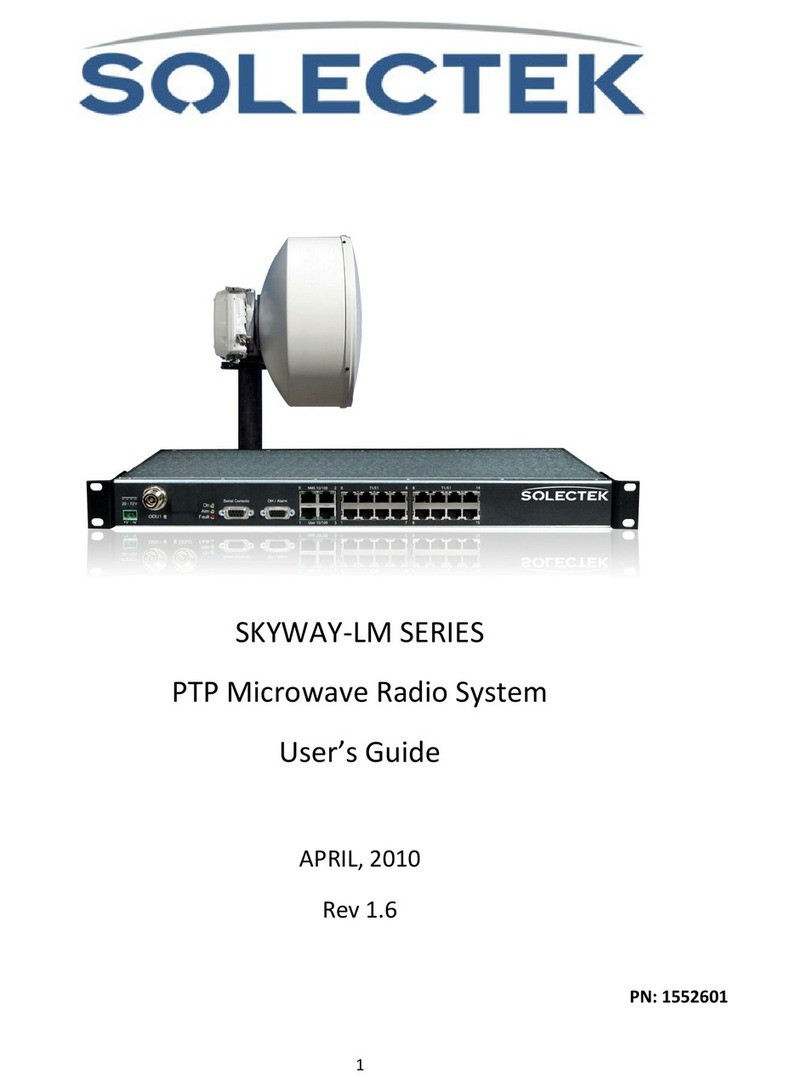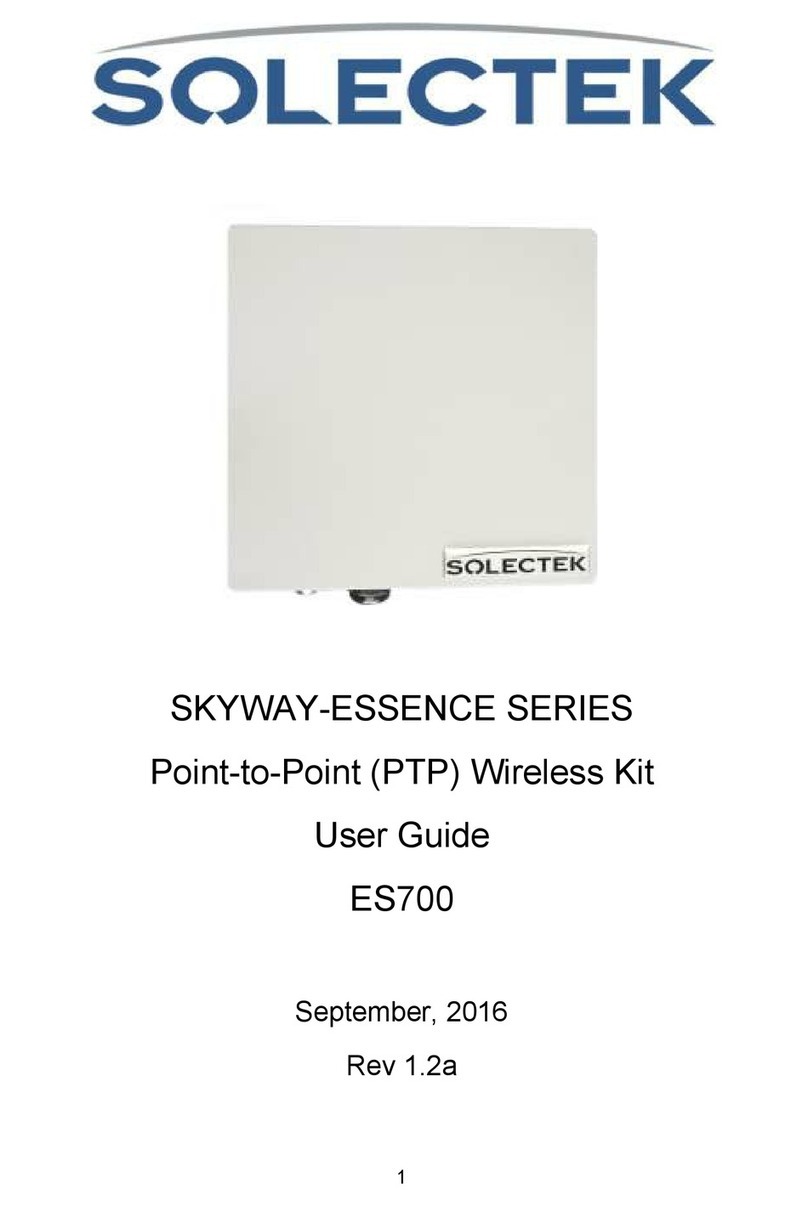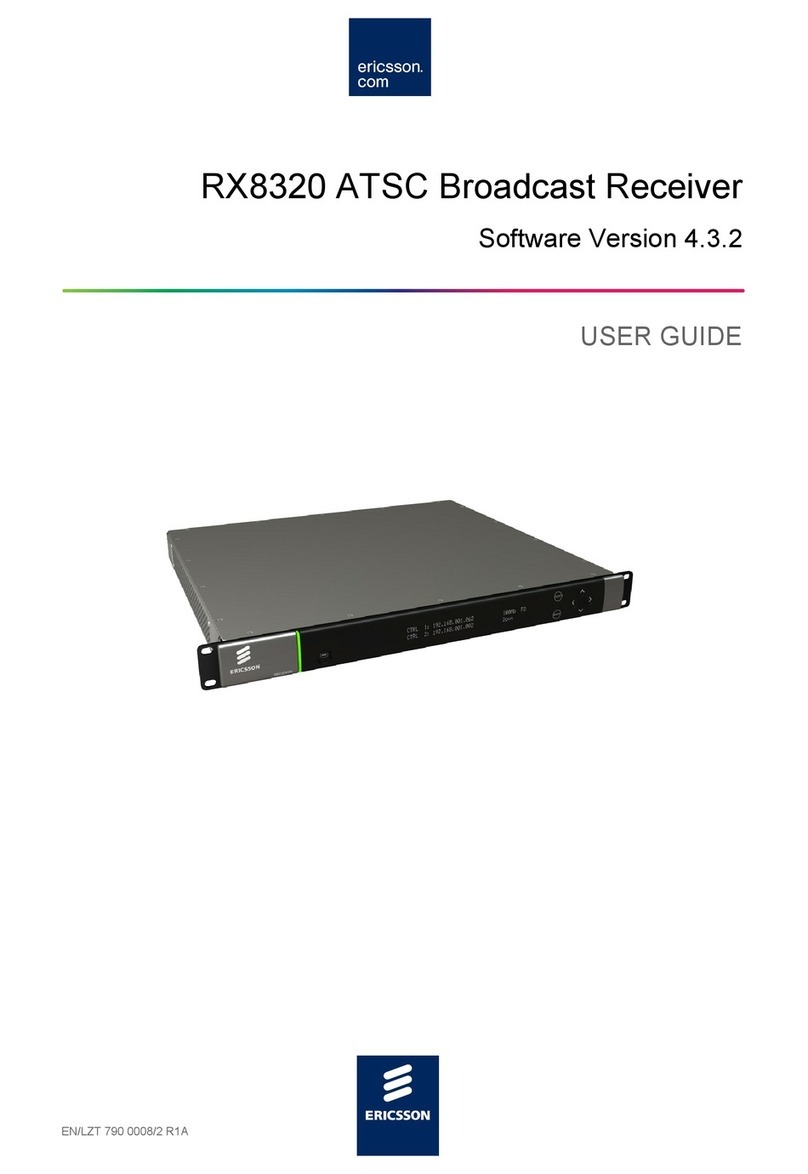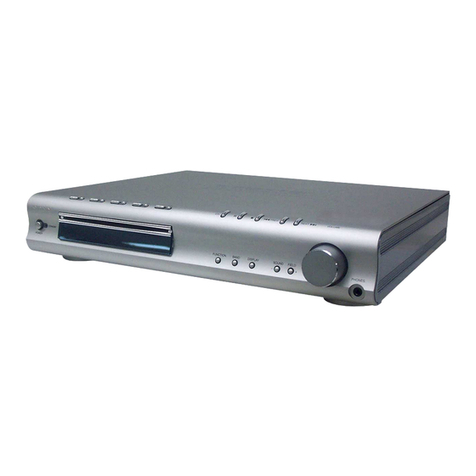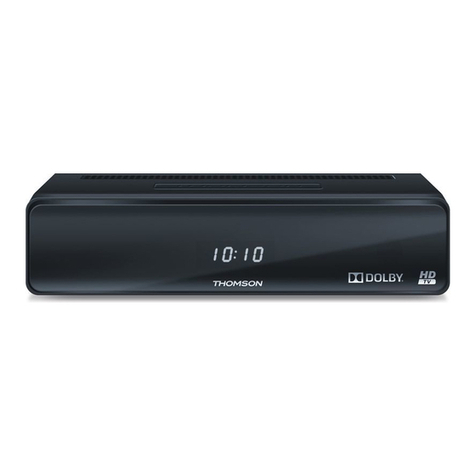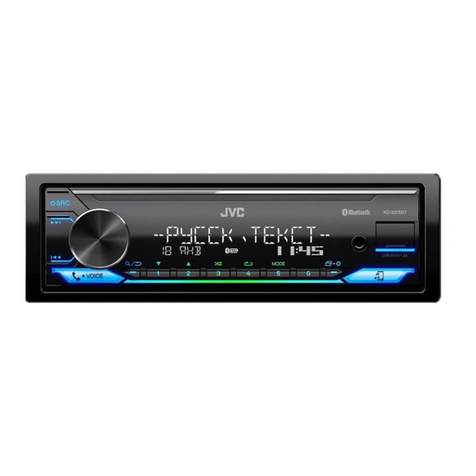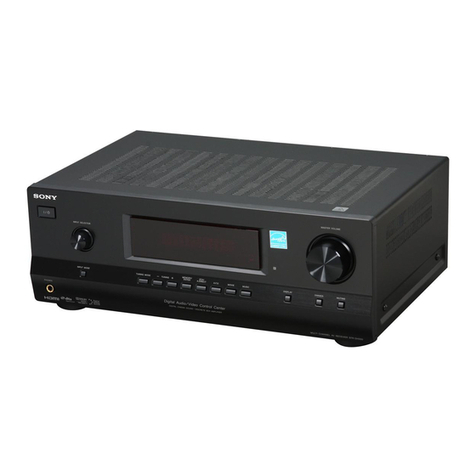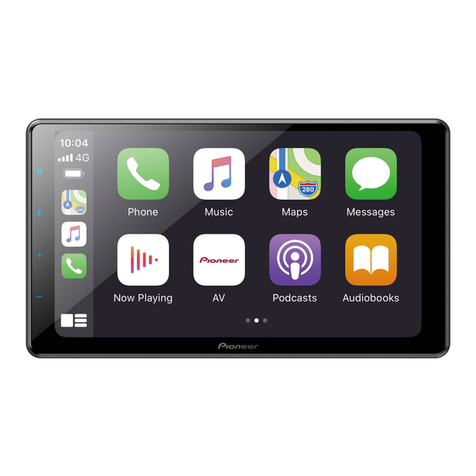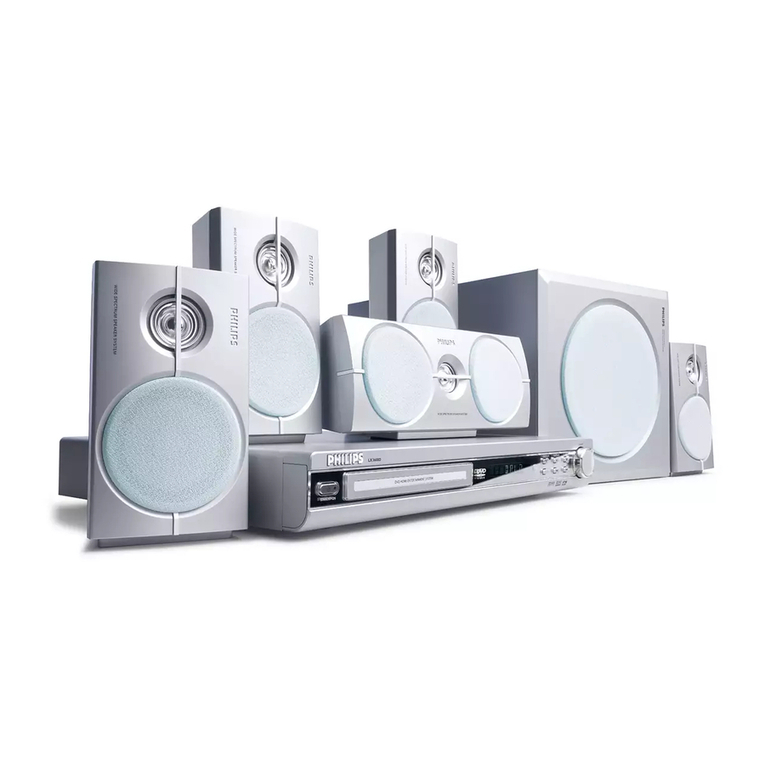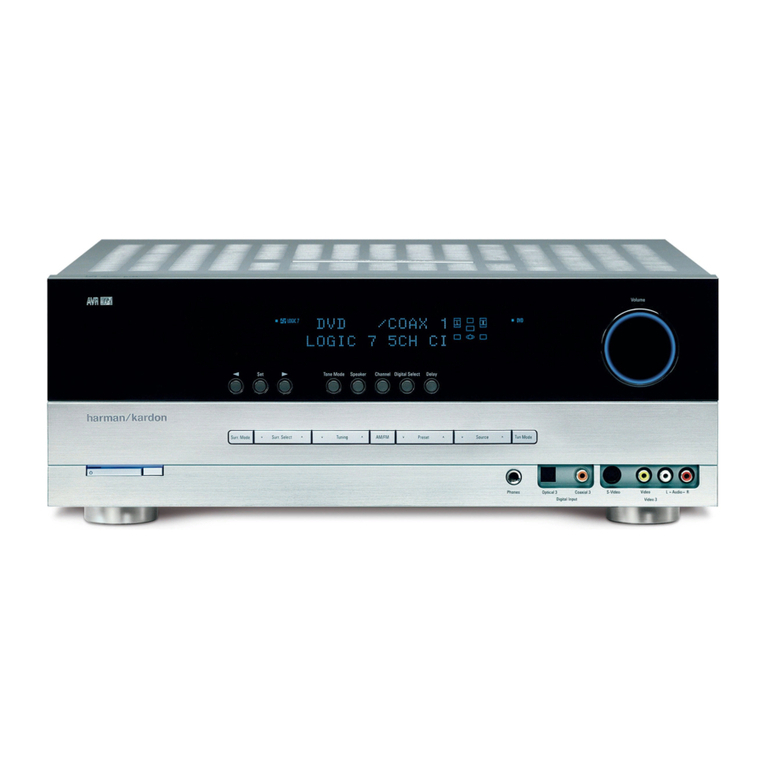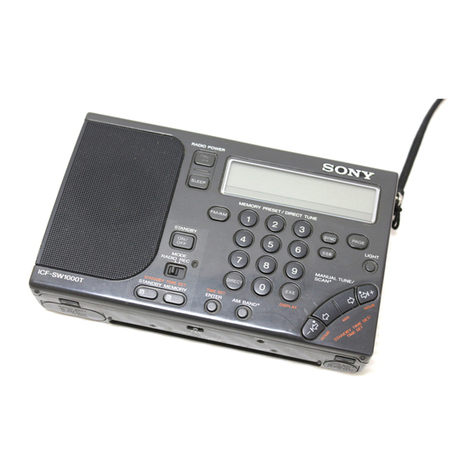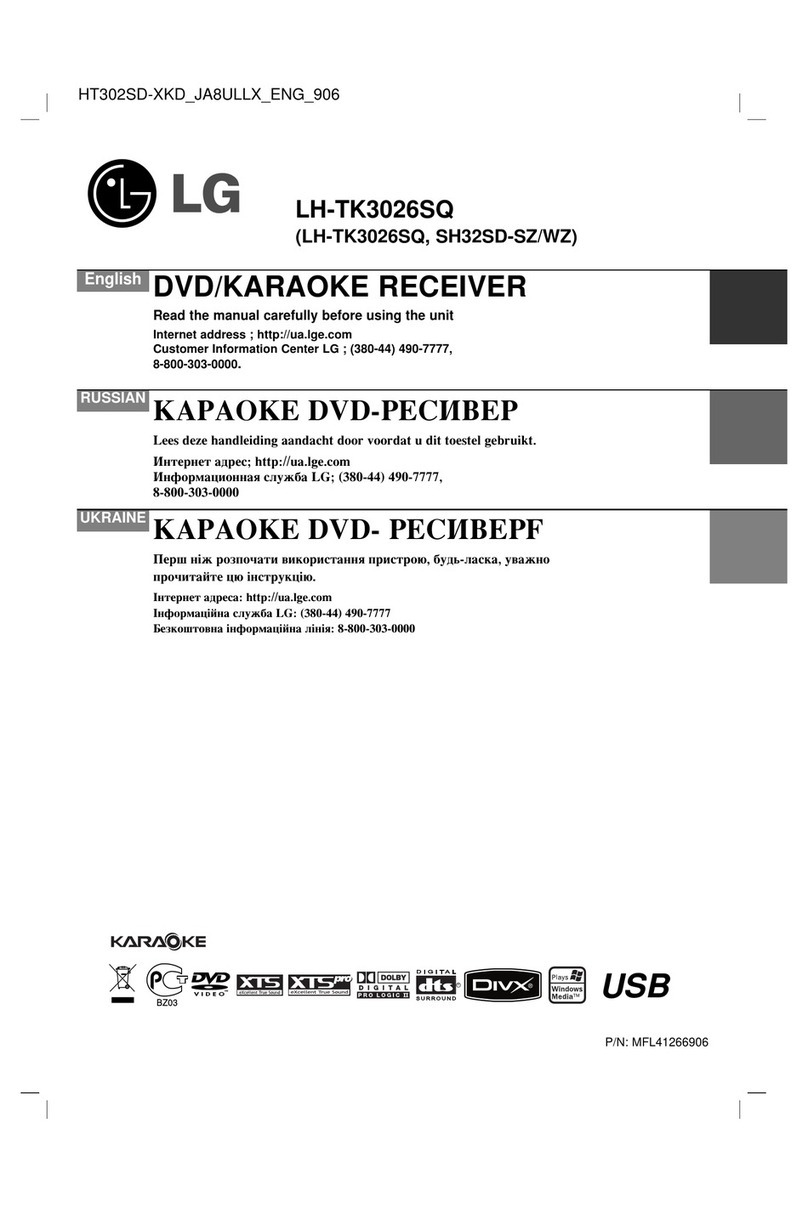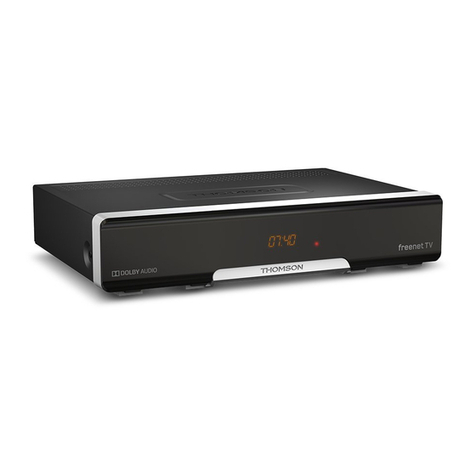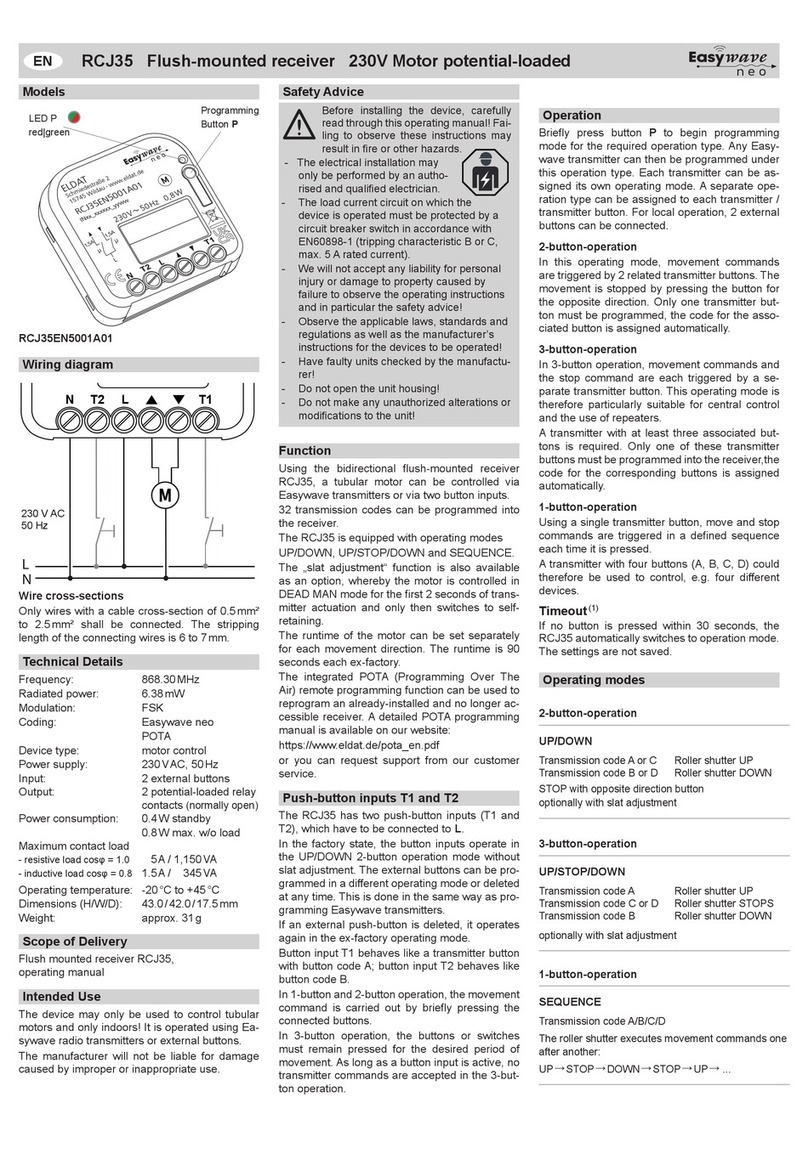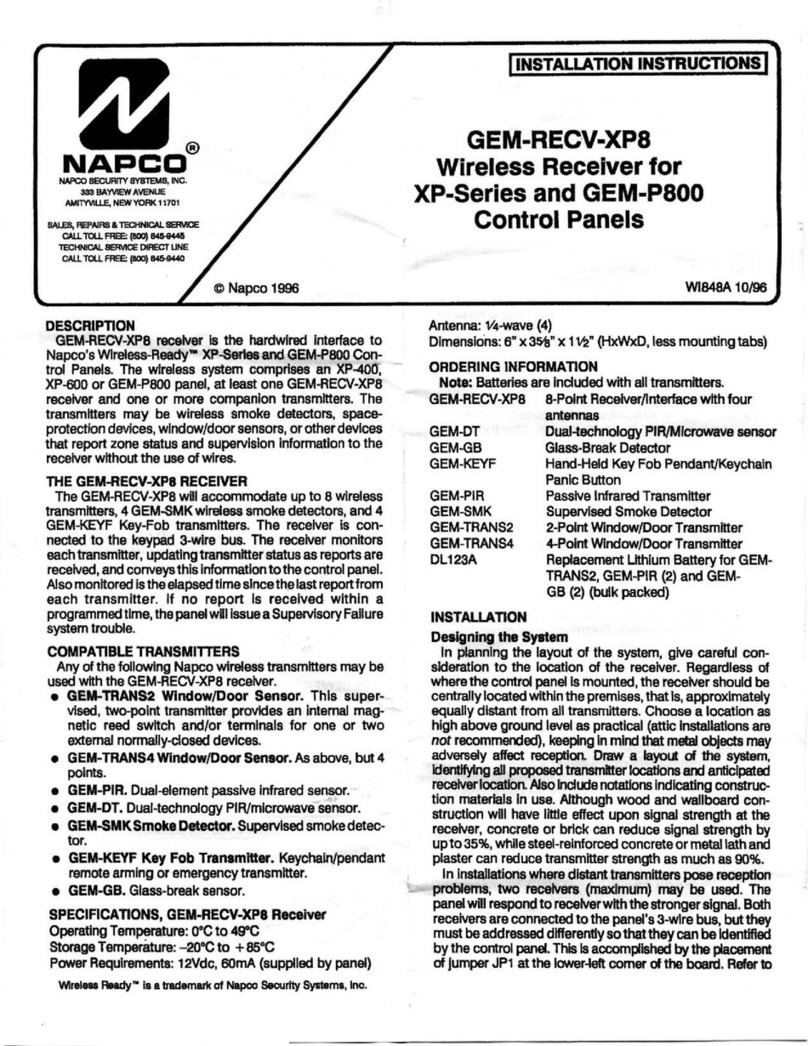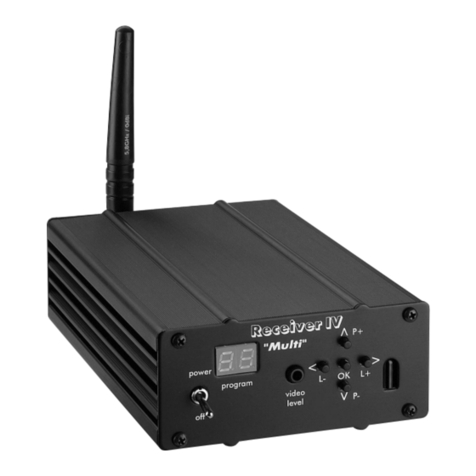Solectek SKYWAY-EM User manual

1
SKYWAY-EM SERIES
Indoor, Long-Haul
PTP Microwave Radio System
User’s Guide
September, 2012
Rev 1.1

2
Notice
This document contains information that is proprietary to Solectek Corporation.
No part of this publication may be reproduced, modified, or distributed without prior written authorization
of Solectek Corporation.
This document is provided as is, without warranty of any kind.
Registered Trademarks
Solectek® is a registered trademark of Solectek Corporation.
SkyWay® is a registered trademark of Solectek Corporation.
Other names mentioned in this publication are owned by their respective holders.
Statement of Conditions
The information contained in this document is subject to change without notice.
Solectek Corporation shall not be liable for errors contained herein or for incidental or consequential
damage in connection with the furnishing, performance, or use of this document or equipment supplied
with it.
Information to User
Any changes or modifications of equipment not expressly approved by the manufacturer could void the
user’s authority to operate the equipment and the warranty for such equipment.
Disclaimer
In accordance with Solectek’s continuing efforts for improving its products, the information contained in
this document is subject to change without notice. However, RBW assumes no responsibility or liability for
any errors or inaccuracies that may appear
in this document.
Copyright © 2012 by Solectek Corporation. All rights reserved.
Software Version Number: Version 1.0
Headquarters:
Solectek Corporation
6370 Nancy Ridge Dr, Suite 109
San Diego, CA 92121
858.450.1220 (tel)
858.457.2681 (fax)
www.solectek.com
sales@solectek.com

3
About this Guide
This user’s guide provides information required for features, configuration and testing of Solectek
SkyWay-EM Series Licensed Microwave PTP links.
Contents of this Guide
This Guide is structured as follows:
Chapter 1: Product Overview
This chapter provides introductory information on the CM Series that includes a brief description of the
radio’s features, the contents of its packaging, and the radio’s general specifications.
Chapter 2: Connections and Setup
This chapter identifies the main radio ports and their functions, and provides cautionary information on
polarity, Interchangeability and cable gland connection.
Chapter 3: Configuring the Radio
This chapter provides configuration procedures using the radio’s Web GUI. These procedures include
setting up network management and configuring the optional serial connection.
Chapter 4: Testing the Radio on the Air
This chapter provides information on configuring the allowable parameters according to each of the 4
user selected radio transmitting modes.
Chapter 5: Alarms and Troubleshooting
This chapter provides basic information on identifying and resolving potential equipment alarms.
Typographical Conventions
Typographical conventions used in this user’s guide convey the following messages/alerts:
NOTE. Text accompanying this icon provides useful
information and general tips.
WARNING/STOP. Text accompanying this icon alerts
the user to imminent dangers of injury and/or damage
to equipment. The user is asked to stop any related
operation.
CAUTION. Text accompanying this icon cautions the
user about potential hazards of injury and/or damage to
equipment.

4
Acronyms and Abbreviations
ACM Adaptive Coding and Modulation
ANSI American National Standards Institute
ATPC Automatic Transmit Power Control
CLI Command Line Interface – refers to both Serial access and SSH access
ETSI European Telecom Standard
FCC Federal Communications Commission
IDU Indoor Unit
IF Intermediate Frequency
In-band Communications which occur within the RF-Link established for payload
LTE Long Term Evolution
MTBF Mean Time Before Failure
NMS Network Management System
ODU Outdoor Unit
Out-of-band Communications which occur outside the RF-Link established for payload
PA Power Amplifier
POE Power Over Ethernet
QoS Quality of Service
RSL Receive Signal Level
RSSI Receive Signal Strength Indication
RTPC Remote Transmit Power Control – ETSI term.
Rx Receive or Receiver
TBD To be determined
Tx Transmit or Transmitter

5
Contents
Acronyms and Abbreviations.......................................................................................................4
Contents .....................................................................................................................................5
1. Product Overview.................................................................................................................6
1.1 SkyWay-EM RFU Key Features....................................................................................7
1.2 Functional Description...................................................................................................8
1.3 Configuration Options ...................................................................................................9
1.4 Transceiver Frequency Range....................................................................................14
1.5 System Level Specifications .......................................................................................14
1.6 Transmitter Features...................................................................................................14
1.7 Receiver Features.......................................................................................................16
1.8 Branching Unit (BU) Specifications .............................................................................16
2. Installing and Configuring RFU ..........................................................................................24
2.1 Installation Procedure .................................................................................................24
2.2 Basic Configuration.....................................................................................................30
2.3 Alarm and Troubleshooting .........................................................................................34
3. RFU Maintenance and Upgrade.........................................................................................37
3.1 Replacing a Transceiver .............................................................................................38
3.2 Replacing a Branching Unit.........................................................................................40
3.3 Replacing a Filter........................................................................................................42
3.4 Removing the RFU from the Rack ..............................................................................44
3.5 Replacing a Fan Assembly .........................................................................................46
3.6 Replacing an RF Cable...............................................................................................47
3.7 Field Upgrade Options .................................................. Error! Bookmark not defined.
4. Branching Unit Options ......................................................................................................49

6
1. Product Overview
This user guide describes the operation of the SkyWay-EM PTP microwave radio system. The
SkyWay-EM Series is part of Solectek’s broadband wireless product line, including backhaul,
last mile access and enterprise and video surveillance wireless transport.
The SkyWay-EM Series All-Indoor Radio is carrier-class long-haul PTP backbone system.
There are two separate components to the EM radio system.
•Signal Processing Unit (SPU) – The SPU functions consist of physical network
interfaces (Ethernet, TDM, STM ports, etc), network protocol processing, user interface
& network management, and wireless modem (generating IF signals). An SPU has
essentially the same function as an indoor unit (IDU) in traditional split architecture
commonly implemented in licensed microwave links.
Figure 1-1: SkyWay-EM Signal Processing Unit (SPU)
•Radio Frequency Unit (RFU) – The RFU functions consists of IF to carrier RF signal
conversion and power amplification in the Tx chain and similar down-conversion in the
Rx chain. An RFU is similar to an ODU in split architecture, except that an RFU has an
additional component called Branching Unit (BU), which performs multiplexing of several
RF channel signals.
Figure 1-2: SkyWay-EM Radio Frequency Unit (RFU)
This document describes the RFU and EM system architecture mostly. Please refer to a
separate document for detailed description of the SPU.
Applications of All Indoor RFUs include reliable wireless backbones for Mobile carrier networks,
Mission-critical public safety deployments, Railways, Pipelines, Utilities, Local exchanges, and
Enterprise.
The RFU supports microwave backhaul frequencies in the 6, 7, 8, and 11 GHz frequency bands.

7
1.1 SkyWay-EM RFU Key Features
The SkyWay-CM radio’s main features are as follows:
Figure 1-3: RFU Shelf, components for 1+1 MHSB configuration shown.
The following are the key features of the RFU:
Very High Power
RFU
Guaranteed 33 dBm (at 1+0 antenna port), x @ 128 QAM
and 6 GHz,
Min.
High Power RFU
Guaranteed 30
dBm (at 1+0 antenna port), x @ 128 QAM
and 6 GHz
Compact design
2.77U height for 1+1 Protected configurations
Supported modulations
QPSK, 16 QAM, 32 QAM, 64 QAM, 128 QAM and 256 QAM
Frequency bands
• L6, U6, 7, 8, and 11 GHz
• Paired and Unpaired frequency plans
Frequency step sizes
• 5 kHz: for L6/U6, 7 and 8 GHz
• 125 kHz: for 11 GHz
ANSI bandwidth range
3.75 to 40 MHz
Upgradability
Field flexible and upgradable
Configurability
System highly configurable
Noise figure at antenna port,
(1+0 configuration)
4.5 dB (5.0 dB for 11 GHz) Max.
IF
350 MHz x; 140 MHz Rx IF
Power supply
Wide mouth, 20 to 60 V with any polarity
Other operation mode
Eco Mode, offering reduced power consumption
The system is designed in modules for flexible configuration and easy field upgrades.
•Each shelf assembly can house two TR modules (transceivers).
•Branching units are inserted to the back for antenna interface.
•RF cables are added for interconnecting the TR modules.
•Front covers are placed for protection against dust.

8
The following figure shows all components of the SkyWay-EM RFU and illustrates how they get
assembled.
Figure 1-4: RFU components diagram
1.2 Functional Description
A 50 Ωcoaxial cable allows for transmitting the IF signals between the RFU and the SPU.
The coaxial cable also carries the telemetry signals between the SPU and the RFU.
Figure 1-5, provides a general look at the RFU’s architecture.
Figure 1-5: Basic RFU Architecture
The RFU houses up to two Transceivers per shelf, and a BU that connects the RFU to one or
several antennas, through elliptical waveguide(s).

9
The following Table describes briefly the functions of each RFU main component.
Component
Functions
Transceiver,
consisting of:
Transmitter,
Receiver,
Up/down
converters,
LO synthesizers,
LNA,
Power Amplifier,
Microcontroller,
Power supply,
and RFU-SPU
interconnect
multiplexer
In a Transmit Path
• Using synthesized sources, up-converts, filters, and amplifies the Tx
IF signal to the final RF
• Amplifies the RF signal and feeds it to the BU
In a Receive Path
• Using synthesized sources, down-converts, and filters the signal
received from the BU to generate the IF signal to the SPU
One Transceiver covers one frequency band; two Tx output power
options available:
– For High Power (HP) option, one 6 GHz transceiver covers both the L6
and U6 bands
– For Very High Power (VHP) option, one 6 GHz transceiver covers the
L6 band and another 6 GHz transceiver covers the U6 band
Tx and Rx frequencies are independently programmable to support
paired and unpaired T/R channel plans
Possible Transceiver Options
• One transmitter and one receiver; One transmitter and two receivers with IF
Combiner
Branching Unit,
consisting of:
– Tx RF filter(s)
– Rx RF filter(s),
– Branching
circulators
In a 1+1
MHSB
or a 1+1
MHSB
/
SD
system
• The BU is equipped with a RF relay switch. Only one transmitter is
transmitting, the RF relay switch selects one of the two “hot” Tx outputs to be
connected to the antenna. The standby Tx is continuously monitored for alarm.
Several Branching Unit Supported Options as protection schemes are
presented in later chapters.
1.3 Configuration Options
RFU Configuration Figure Reference Functionality
1+0 Unprotected Figure 1-6 Non-redundant system
1+1 MHSB Figure 1-7 Hardware redundant system (equal or unequal
Rx splitter)
1+1 MHSB Tx / SD Rx Figure 1-8 Hardware redundant system with SD path
protection
1+0 Tx / SD Rx Figure 1-9 Non protected hardware with SD path
protection, mainly for ring-protected
configurations and, can also be deployed
for linear configurations
1+1 FD or 2+0 Figure 1-10 Hardware/path protection using two
frequencies (FD) or
Two carriers supported on a single antenna
port
4+0 Several carriers supported on a single
antenna port
2+2 MHSB Two hardware redundant systems on one
antenna (two carriers)
2+2 MHSB Tx / SD Rx Two carriers each with hardware
redundancy and SD path protection

10
1+1 Hybrid Diversity Hardware and path protection scheme,
using FD and SD (two antennas), at one or
both sites of the link, for very difficult paths
1+0 MHSB-Ready Figure 1-11 Non redundant system that can be
upgraded to 1+1 MHSB system without
traffic interruption
1+0 Repeater Figure 1-12 Back-to-back 1+0 repeater configuration
installed in single RFU shelf
1+0 Tx / SD Rx Repeater Figure 1-13 Back-to-back 1+0 Tx / SD Rx repeater
configuration installed in single RFU shelf
1+0 (East) and Tx / SD
Rx (West) Repeater
Back-to-back repeater configuration with
1+0 on the East side, and 1+0 Tx / SD Rx
on the West side, all installed in a single
RFU shelf
Figure 1-6: 1+0 Unprotected Configuration
Figure 1-7: 1+1 MHSB Configuration

11
Figure 1-8: 1+1 MHSB Tx / SD Rx Configuration
Figure 1-9: 1+0 Tx / SD Rx Configuration

12
Figure 1-10: 1+1 FD or 2+0 Configuration
Figure 1-11: 1+0 MHSB-Ready Configuration

13
Figure 1-12: 1+0 East/West Repeater Configuration
Figure 1-13: 1+0 Tx / SD Rx East/West Repeater Configuration

14
1.4 Transceiver Frequency Range
Frequency
Band, GHz
High Power Option
Tuning Range, GHz
(Edges of band)
6 (a) HP Only 5.925-7.125
L6 VHP Only 5.925-6.425
U6 VHP Only 6.425-7.125
7 (b) HP and VHP 7.110-7.900
8 HP and VHP 7.725-8.500
11 HP and VHP 10.696-11.71
(a) 6 GHz transceivers equipped with a high power PA module cover the entire 6 GHz band (L6 and U6) with a
single 6 GHz transceiver. 6 GHz transceivers equipped with a very high power PA module are split into L6
and U6 transceivers.
(b) 7, 8 and 11 GHz transceivers equipped with high power PA module or very high power PA module cover
their respective band with a single transceiver.
1.5 System Level Specifications
Minimum T/T when Sharing the Same Antenna Port
Frequency, GHz
Channel
Bandwidth, MHz
Minimum T/T, MHz
30 MHz RF filters
40 MHz RF filters
6
29.65, 30
60 N/A
7, 8
30
60
N/A
11
30, 40
60 80
6, 7, 8 Equal or less than 20 50
N/A
11 60 70
Minimum Innermost T/R when Sharing the Same Antenna Port
Frequency, GHz
Minimum T/R, MHz
30 MHz RF filters
40 MHz RF filters
6
70
N/A
7, 8
70
N/A
11 80 100
1.6 Transmitter Features
Transmit output power in 1+1 MHSB:
• Insertion loss due to the RF switch and its connected cables: Reduce values from Tx Power
Table below by 0.4 dB (0.5 dB for 11 GHz)

15
• Standby transmitter: Reduce values from Tx Power Table to fixed +25.5 dBm (+23 dBm for 11
GHz) at HPA output, regardless of modulation levels, unless it is already set below that in ATPC
or in RTPC mode
NOTE: Standby transceiver operates at lower power when in standby mode for energy saving.
Power is automatically increased to the configured level when switched over.
Transmit output power display accuracy in dB
• ± 1.0 dB for the attenuation range, 0 to 3 dB
• ± 2.0 dB for the attenuation range, between 4 dB and the maximum attenuation applicable for
the respective modulation
Transmit output power when muted: < -50 dBm
Transmit frequency stability (including aging): ±7 ppm
Transmit return loss at BU antenna port: ≥24 dB
Attenuation Range values for various configurations are summarized in the following table:
Attenuation
Range
256QAM 128QAM 64QAM 32QAM 16QAM QPSK
dB 19 20 21 22 23 24
ATPC Range values for various configurations are summarized in the following table:
ATPC
Range
256QAM 128QAM 64QAM 32QAM 16QAM QPSK
dB 19 20 21 22 23 24
Transmit Output Power Table, dBm
High Power (GHz) Very High Power (GHz)
6 7 8 11 6L 6U 7 8 11
QPSK 34.0 33.5 33.5 31.0 35.0 35.0 34.5 34.5 32.0
16QAM 33.0 32.5 32.5 30.0 34.5 34.5 34.0 34.0 31.5
32QAM 32.0 31.5 31.5 29.0 34.0 34.0 33.5 33.5 31.0
64QAM 31.0 30.5 30.5 28.0 33.5 33.5 32.5 32.5 30.0
128QAM 30.0 29.5 29.5 27.0 33.0 33.0 32.0 32.0 29.5
256QAM 29.0 28.5 28.5 26.0 32.0 32.0 31.0 31.0 28.5
NOTE. In this section, Transmit Power is measured at the Antenna Port of a BU in
a 1+0 configuration. Tx Power Table specifies Guaranteed Transmit Output Power
values. Guaranteed Transmit Output Power means that the Tx Output Power at the
antenna port is equal or higher than the stated value across the specified
temperature range.

16
1.7 Receiver Features
Guaranteed receiver noise figure at -70 dBm RSL
L6/U6 7 GHz 8 GHz 11 GHz
Noise Figure (dB) 4.5 4.5 4.5 5
Typical noise figure at room temperature: 0.5 dB or better
Image rejection: > 80 dB
Maximum receiver level (RSL), for all modulations, dBm
•at BER ≤10-6 = -20
•Meets specified RBER = -23
•No damage = 0
Receiver dynamic range: -20 to -90 dBm
Receive AGC response speed: >100 dB/s
RSL display accuracy, dB
•± 2, between –20 and -75 dBm or 10-6 threshold level, (whichever comes first)
•± 3, between -75 and -90 dBm or 10-6 threshold level, (whichever comes first)
Receive local oscillator frequency
L6/U6 7 GHz 8 GHz 11 GHz
Step Size (kHz) 5 5 5 125
Receive frequency stability (including aging): ± 7 ppm
Receiver return loss at BU antenna port: ≥24 dB
1.8 Branching Unit (BU) Specifications
The SkyWay-EM Series RFU has a built-in branching unit on the backside of the unit with
waveguide flange for each transceiver.

17
Figure 1-14: Back side of the RFU, showing waveguide flanges
The following chart is for BU antenna port flange
Frequency Band Wave Guide / Flange
L6 WR-137 / CPR-137G
U6 WR-137 / CPR-137G
7 GHz WR-112 / CPR-112G
8 GHz WR-112 / CPR-112 G
11 GHz WR-90 / CPR – 90G
The following chart is for termination port flange
Frequency Band Wave Guide / Flange
L6 WR-137 / CMR-137
U6 WR-137 / CMR-137
7 GHz WR-112 / CMR-112
8 GHz WR-112 / CMR-112
11 GHz WR-90 / CMR – 90

18
NOTE. Tx Output Power is preset at the factory to its typical value (0 dB attenuation) at
the antenna port of a 1+0 BU configuration, for the configured modulation. Typical Output
Power is 0.5 dB higher than the values in the Tx Power Table. This applies to all BU
configurations. Unless the modulation level has changed in the field or, the transceiver is a
spare unit, there is no need to set the Target Output Power, unless it is in RTPC mode. Tx
Output Power at the BU antenna port = Power at transmitter PA output port — Tx BU loss.
Tx BU Loss Principles
BU Configuration
Loss measured at BU Antenna Port
Basic Tx BU Loss
a
Additional Tx BU Loss
b
1+0 Yes No
All, other than 1+0 Yes Yes, according to configuration
a. Factory-set, cannot be modified by user
b. Factory-set, can be modified in the field by user
The typical / nominal / guaranteed Tx output power is specified at the 1+0 Tx BU antenna port.
Target output power entered by the user is the output power at the PA output port reduced by
the Basic Tx BU Loss.
Example: A 6 GHz system, in 128 QAM and 1+1 MHSB configuration
Value, dBm
Explanation
Factory/user entered 30.5 • Entered target output power
Transceiver-adjusted power
at PA output port (Target
output power + 1 dB Basic Tx
BU loss)
31.5 • Adjusted value by transceiver at PA output port
• Factory fine-tuned when PA output is not
31.5 dBm, (to compensate for calibration
inaccuracy of the wide band transceiver)
Actual Tx output power at
that
BU antenna port, dBm
30.1 • Since typical Additional Tx BU loss is 0.4 dB for a
1+1 MHSB configuration
• The Tx RF filter is equipped with a Monitoring port and an SMA connector. This Monitoring
port is connected to the Tx RF filter input through a coupler. The difference between the output
power at the Monitoring port and the output power at 1+0 antenna port is the coupling loss of
the Monitoring port. The Monitoring port coupling loss is around 30 dB. The exact coupling loss
is marked on that Tx RF filter.
Measured output power at the Monitoring port =
Target output power entered by the user –
(Monitoring port coupling loss + Additional Tx BU loss, where applicable).
• In a 6 GHz, 1+1 MHSB configuration:
Measured output power at the Monitoring port =
Target output power entered by the user –
[Monitoring port coupling loss, (30 dB) + Additional Tx BU loss, (0.4 dB)], all losses approximate.

19
Typical Basic Tx BU loss for a 1+0 Configuration
Configuration Specifics
Basic Tx BU Loss, dB
6, 7, 8 GHz
11 GHz
1+0 • BU loss is frequency band dependent 1.0 1.8
Typical Additional Tx BU Losses
Configuration
Specifics
Typ. Additional Tx BU Loss, dB
6, 7, 8 GHz
11 GHz
1+0 — 0 N/A 0 N/A
1+1 Hybrid
Diversity
(FD+SD)
• This terminal uses two frequencies and
two antennas to transmit the same traffic.
• From a BU point of view, this terminal
uses two 1+0 BUs; each BU antenna port
connected to its associated antenna.
0 0 0 0
1+0 Tx / SD
Rx
• In this configuration, the Tx BU loss is the
same as that of a 1+0 configuration.
0 N/A 0 N/A
1+1 MHSB
and
1+0 MHSB-
ready
• In this configuration, the RF switch and
the associated cables introduce additional
BU losses, compared to those of a 1+0
configuration.
0.4 0.4 0.5 0.5
2+2 MHSB
• This BU enables the transmission of two
traffics using one antenna; each one is
protected by a 1+1 MHSB configuration.
• The double-junction circulator of the
second MHSB branch is connected to the
expansion port of the first MHSB double
junction circulator, resulting in slightly
higher Tx BU loss in the second branch.
• Additional Tx BU Loss for 1st MHSB 0.4 0.4 0.5 0.5
• Additional Tx BU Loss for 2nd MHSB 0.94 0.94 1.19 1.19
1+1 FD • Additional Tx BU Loss 0 0.54 0 0.69
N+0, where
N = 1,2,3,4
• This BU enables N transceivers to carry
N traffics sharing the same antenna.
N double-junction circulators connect in
series through spacers and, if necessary,
through elbows.
• The antenna port of this BU is located at
the first double-junction circulator.
Transceivers that are further back from the
antenna port will have higher additional BU
losses.
• Additional Tx BU Loss for 1st Transmitter 0 N/A 0 N/A
• Additional Tx BU Loss for 2nd Transmitter 0.54 N/A 0.69 N/A
• Additional Tx BU loss for 3rd Transmitter 1.08 N/A 1.38 N/A
• Additional Tx BU loss for 4th Transmitter 1.62 N/A 2.07 N/A

20
Tx Output Power Display
RFU Tx output power display can be referenced
• to the port with Basic Tx BU loss; or
• to the actual BU antenna port.
In a 1+0 configuration, a reference to the BU antenna port is the same as a reference to the port
with Basic Tx BU loss. The value entered by the user as the target output power is referenced
to the port with Basic Tx BU loss. If the user chooses a value referenced to the actual BU
antenna port, the displayed Tx output power value is the user-entered target value, reduced by
the Additional Tx BU loss for that particular BU configuration.
RSL Display
The RSL display can be either referenced to the LNA input or at the antenna port. Unlike the Tx
BU, there is only one Rx BU loss to configure. This Rx BU loss includes the Rx filter loss, the Rx
splitter loss and other losses, where applicable. This BU loss is entered at the factory and can
be changed in the field, if the system configuration changes.
Typical Rx BU Losses
Configuration
Typ. Rx BU Loss, dB
6, 7, 8 GHz
11 GHz
1+0
1.0
1.5
1+1 Hybrid Diversity (FD+SD)
Rx A
Rx B
Rx A
Rx B
1.0
1.0
1.5
1.5
1+0 Tx / SD Rx
Rx A
(main)
Rx B
(diversity)
Rx A
(main)
Rx B
(diversity)
1.0
0.82
1.5
1.27
1+1 MHSB Tx / SD Rx
1.0
0.82
1.5
1.27
2+2 MHSB Tx / SD Rx:
–
1
st
MHSB
1.0
0.82
1.5
1.27
–
2
nd
MHSB
1.54
1.18
2.19
1.73
1+1
MHSB with Equal Splitter
Rx A
Rx B
Rx A
Rx B
4.2
5.1
4.8
6.0
1+1 MHSB with Unequal Splitter
2.3
8.8
3.2
9.7
2+2 MHSB with Equal Splitters
–
1
st
MHSB
4.2
5.1
4.8
6.0
–
2
nd
MHSB
4.74
5.64
5.49
6.69
2+2 MHSB with Unequal Splitters
–
1
st
MHSB
2.3
8.8
3.2
9.7
–
2
nd
MHSB
2.84
9.34
3.89
10.39
Table of contents
Other Solectek Receiver manuals
